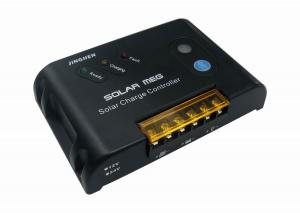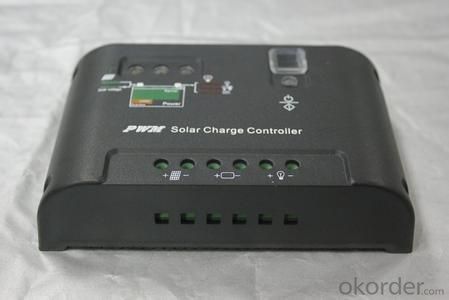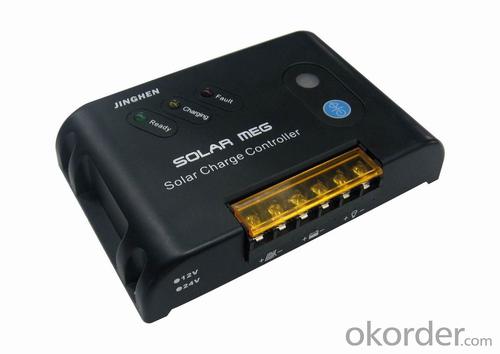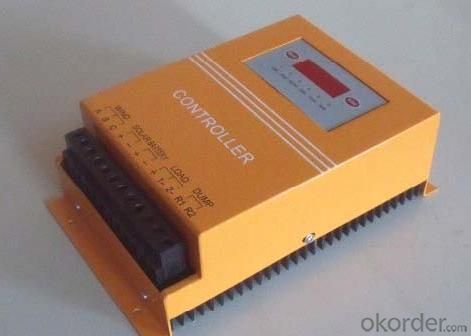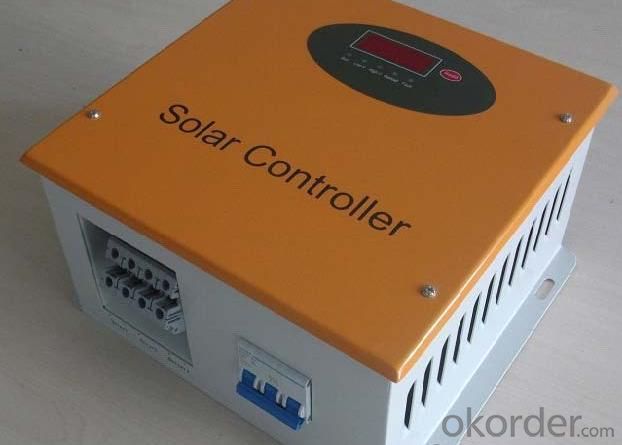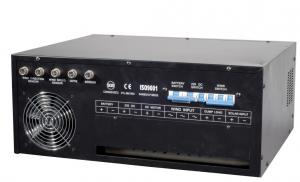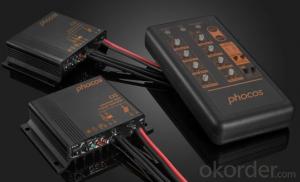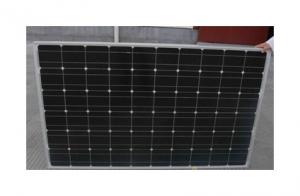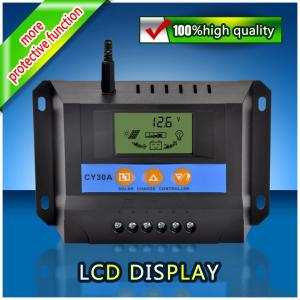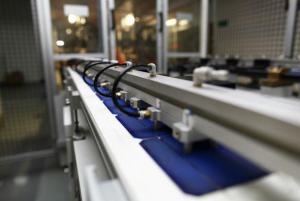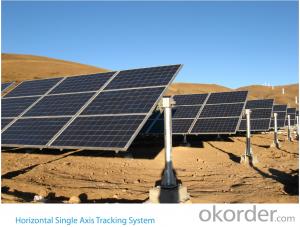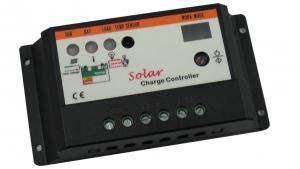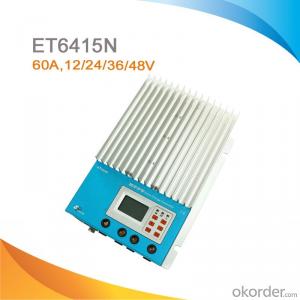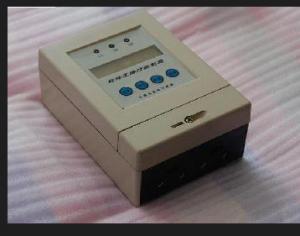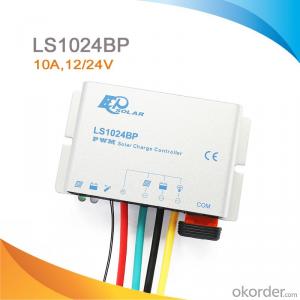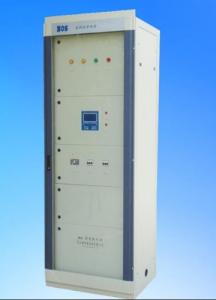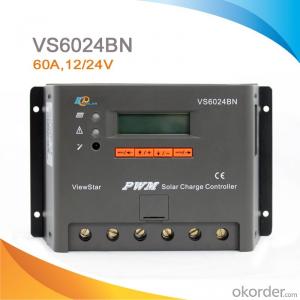L-Series P4Q Solar Tracking PV Controller
- Loading Port:
- Nanjing
- Payment Terms:
- TT/LC
- Min Order Qty:
- 50sets set
- Supply Capability:
- 1-3000sets/month set/month
OKorder Service Pledge
OKorder Financial Service
You Might Also Like
Specification of L-Series PV Controller
Professional MCU microprocessor control, the real charge and discharge of intelligent control;
Low-loss, long-life MOSFET switching devices as the main controller;
PV charging(PWM) technology, a higher charging efficiency;
Operating status, fault LED indicates the;
Control modes: light control switch control mode / off light control to open when the control mode / automatic light control mode when the control;
Absorb the output circuit with inductive load;
Memory function, the controller re-energized after power on, automatically de-energized mode before;
Perfect protection;
Against reverse battery;
Maintenance easy, fast;
Optional Configuration of L-Series PV Controller:
RS485/RS232 Remote monitoring;
Supporting electricity can be a complementary manner to ensure uninterrupted power supply load;
Technical Data of L-Series PV Controller:
Voltage | 12V | 24V | 36V | 48V | ||
Rated current range | 5A~30A | 5A~30A | 5A~20A | 5A~20A | ||
Battery input | ||||||
Rated input voltage (VDC) | 12 | 24 | 36 | 48 | ||
Under voltage protection (VDC) | ≤10.8 | ≤21.6 | ≤32.4 | ≤43.2 | ||
Recovery voltage (VDC) | ≥12.3 | ≥24.6 | ≥36.9 | ≥49.2 | ||
Overvoltageprotection (VDC) | ≥16.5 | ≥33.0 | ≥49.5 | ≥66.0 | ||
Overvoltage recovery (VDC) | ≤15.0 | ≤30.0 | ≤45.0 | ≤60.0 | ||
Solar energy input | ||||||
Max. open circuit voltage (VDC) | 25.0 | 50.0 | 75.0 | 100.0 | ||
Light control open, turn off the lights | Voltage light(VDC) | ≤3.5 | ≤7.0 | ≤10.5 | ≤14.0 | |
Voltage light (VDC) | ≥7.0 | ≥14.0 | ≤21.0 | ≤28.0 | ||
Float voltage (VDC) | 13.7 | 27.4 | 41.1 | 54.8 | ||
Overcharge protection voltage (VDC) | ≥14.4 | ≥28.8 | ≥43.2 | ≥57.6 | ||
Charge recovery voltage (VDC) | ≤13.2 | ≤26.4 | ≤39.6 | ≤52.8 | ||
DC output | ||||||
Number of outputs(N) | 2 | |||||
Rated output current | load1 (A) | 2.5~15 | 2.5~15 | 2.5~10 | 2.5~10 | |
load2 (A) | 2.5~15 | 2.5~15 | 2.5~10 | 2.5~10 | ||
Overvoltage capacity | 120% overload 60 seconds off the output / 150% overload for 10 seconds to close the output | |||||
Control mode | Light control mode / time control mode / automatic control mode | |||||
Serial communication | RS485(A、B) | |||||
Mechanical dimensions, the work environment | ||||||
Size ( D x W x H ) | 230 x 145 x 75 | |||||
Reference weight (Kg) | 6 | |||||
Protection level | IP41 | |||||
Max. working altitude (m) | ≤3000 | |||||
Temperature range (℃) | -20 ~ +65 | |||||
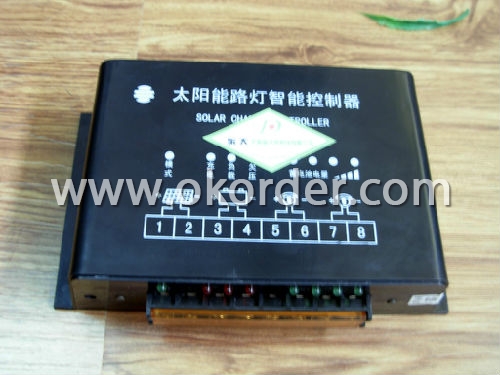
L-Series PV Controller
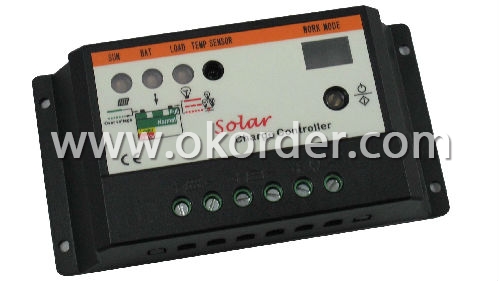
L-Series PV Controller
Packaging & Delivery of L-Series PV Controller
Packaging: Wooden box or Customized
Delivery: Depends on the quantity or Customized
- Q: What is the maximum input voltage for a solar controller?
- The maximum input voltage for a solar controller typically depends on the specific model and manufacturer. However, in general, solar controllers are designed to handle input voltages ranging from 12 volts to 48 volts. It is important to consult the product specifications or contact the manufacturer to determine the precise maximum input voltage for a particular solar controller.
- Q: How does a solar controller prevent damage to the solar panels from lightning strikes?
- The prevention of damage to solar panels from lightning strikes is facilitated by a solar controller, which implements various protective measures. Primarily, it incorporates a surge protector within its structure, capable of diverting excessive voltage caused by lightning strikes away from the panels. This surge protector acts as a barrier, effectively preventing direct contact between the high voltage and the panels. Moreover, grounding mechanisms are often included in solar controllers. These mechanisms establish a secure pathway for lightning-induced currents, directing them safely into the ground. By offering an alternative route for electrical energy, the solar controller ensures that the panels are shielded from the potentially harmful consequences of lightning strikes. In addition, advanced solar controllers frequently employ monitoring and detection systems. These systems employ sensors to identify alterations in atmospheric conditions, such as the accumulation of static electricity or the presence of lightning activity. Upon detecting a potential lightning strike, the solar controller can automatically disconnect the panels from the power source and ground them, effectively isolating them from the electrical surge. Ultimately, a solar controller serves as an indispensable protective device for solar panels during lightning strikes. By utilizing surge protectors, grounding systems, and detection mechanisms, it effectively reduces the risk of panel damage by redirecting excessive voltage, creating a safe pathway for currents, and disconnecting the panels whenever necessary.
- Q: Can a solar controller be used in a solar-powered charging station?
- Yes, a solar controller can be used in a solar-powered charging station. A solar controller regulates the flow of electricity from the solar panels to the batteries, ensuring optimal charging and preventing overcharging. In a solar-powered charging station, the solar controller would play a vital role in managing the charging process and maximizing the efficiency of the system.
- Q: Can a solar controller be used with a solar-powered landfill gas extraction system?
- Yes, a solar controller can be used with a solar-powered landfill gas extraction system. The solar controller is responsible for regulating the flow of electricity from the solar panels to the extraction system, ensuring optimal performance and efficient energy utilization. By using a solar controller, the solar-powered landfill gas extraction system can effectively harness renewable solar energy to power the extraction process, reducing reliance on conventional energy sources.
- Q: Can a solar controller be used in conjunction with a power inverter?
- Yes, a solar controller can be used in conjunction with a power inverter. A solar controller is designed to regulate the charging of a battery from a solar panel, ensuring that the battery is charged efficiently and preventing overcharging. On the other hand, a power inverter is used to convert the DC (direct current) power stored in the battery into AC (alternating current) power for use in powering household appliances or other electrical devices. By using a solar controller in conjunction with a power inverter, the solar controller can regulate the charging of the battery from the solar panel, while the power inverter converts the stored DC power into AC power for use. This combination allows for a more efficient and reliable system, as the solar controller ensures that the battery is charged optimally, while the power inverter provides the necessary AC power when needed. It is important to note that the compatibility between the solar controller and power inverter should be checked to ensure they are suitable for each other. Additionally, proper installation and wiring should be followed to ensure safe and effective operation of the system.
- Q: Can a solar controller be used with a solar-powered marine navigation system?
- A solar-powered marine navigation system can utilize a solar controller. This crucial component, also known as a charge controller, is integral to a solar power system. It regulates the flow of electricity from the solar panels to the battery bank, ensuring optimal charging and preventing battery damage or overcharging. In the context of a solar-powered marine navigation system, the solar controller plays a vital role in managing the energy produced by the solar panels. Its primary function is to efficiently charge the batteries and protect them from overcharging, which can lead to reduced battery lifespan or failure. With the use of a solar controller, the solar-powered marine navigation system can effectively harness solar energy and convert it into usable power for the navigation equipment. This capability enables the system to operate reliably and sustainably, even in remote or off-grid locations where traditional power sources may be scarce or inaccessible. Hence, a solar controller is not only compatible but also indispensable for the proper functionality and durability of a solar-powered marine navigation system.
- Q: Can a solar controller be used with solar-powered indoor lighting systems?
- Solar-powered indoor lighting systems can indeed utilize a solar controller. The purpose of a solar controller is to regulate the power flow from the solar panels to the batteries, ensuring efficient charging and preventing any harm caused by overcharging. Although indoor solar systems may not have the same power demands as their outdoor counterparts, the use of a solar controller can still be advantageous in managing the charging process and prolonging battery life. Furthermore, a solar controller can offer additional functionalities such as dimming options or timers, allowing for customized lighting based on specific requirements. Consequently, incorporating a solar controller in solar-powered indoor lighting systems can optimize the utilization of solar energy and enhance the overall performance and durability of the system.
- Q: Can a solar controller be used with solar-powered indoor heating systems?
- Yes, a solar controller can be used with solar-powered indoor heating systems. The solar controller helps regulate and optimize the flow of solar energy to the heating system, ensuring efficient operation and maximizing energy usage.
- Q: Is it necessary to have a solar controller for every solar panel?
- No, it is not necessary to have a solar controller for every solar panel. A solar controller is typically used to regulate the charging and discharging of batteries in a solar power system. If the solar panels are directly connected to the grid or are not being used to charge batteries, a solar controller may not be needed. However, if batteries are being used to store the solar energy, a solar controller is recommended to ensure proper charging and to protect the batteries from overcharging or damage.
- Q: Can a solar controller be used with solar-powered indoor healthcare systems?
- Yes, a solar controller can be used with solar-powered indoor healthcare systems. A solar controller is a crucial component in a solar power system as it regulates the flow of power from the solar panels to the batteries. While solar-powered indoor healthcare systems may not have direct access to sunlight, they can still make use of solar energy by utilizing solar panels placed outside the building to capture sunlight. The solar controller will then manage the charging and discharging of the batteries that store this solar energy. This stored energy can be used to power various medical equipment, lighting, and other critical systems in indoor healthcare facilities, reducing reliance on grid electricity and ensuring a reliable source of power, especially in areas with unreliable or no access to electricity.
Send your message to us
L-Series P4Q Solar Tracking PV Controller
- Loading Port:
- Nanjing
- Payment Terms:
- TT/LC
- Min Order Qty:
- 50sets set
- Supply Capability:
- 1-3000sets/month set/month
OKorder Service Pledge
OKorder Financial Service
Similar products
Hot products
Hot Searches
Related keywords
